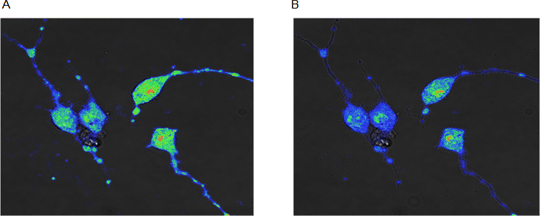Print version
Search Pub Med
Neuropharmacological evaluation of Endemic Aloes from Mascarene Islands
Numerous Medicinal plants have been described in traditional medicine for the treatment of CNS disorders. In this study, the healing Aloemacra which is endemic to Réunion Island and Aloevera were evaluated using different pharmacological assays to explore their potential effects as neuroprotectants [Abuhamdah et al., 2015]. The free radical scavenging potential of the Aloes under study was evaluated using the DPPH assay (mean ± SD, n = 3), and revealed that both the methanolic crude extracts of the Aloes have similar significant radical scavenging potential, with IC50 value 0.389 ± 0.007 mg/ml for A. macra and 0.469± 0.010 mg/ml for A. vera. In vitro cytotoxicity screening of crude methanolic extractsof the Aloes, using the MTT assay indicated that the extracts of all the Aloesstudied, except A. macra(10%cytotoxicity) elicited no toxic effect upon CAD (Cath.-a-differentiated) neuronal cells at concentrations up to 0.1 mg/ml. The neuroprotective properties of the Aloes extract were assessed using hydrogen peroxide-induced neurotoxicity with the CAD cells for 24h. The results revealed that the crude Aloes extracts (0.01 mg/ml) demonstrated differential concentration-dependent neuroprotective characteristics against the toxic effects of hydrogen peroxide (250 µM) in CAD cell cultures. Avera demonstrated92% neuroprotection, while A. macra showed noneuroprotection, even though these are highly related plants. The calcium imaging on live differentiated CAD cells (6 days serum-free) were carried using Calcium Green-1 AM and the LSM 880 with Airyscan-Zeiss confocal microscope to access the effects of the Aloeextracts on calcium levels. The results showed that the extract of A. vera(0.1 mg/ml)rapidly increased and then subsequently robustly suppressed calcium levels well below baseline levels (Fig 1A &1B), and KCl (50 mM)-induced depolarisation (not shown) in cell bodies and processes on a delayed time course, while A. Macra showed a robust decrease in calcium signal only. This study provides the first evidence for antioxidant and neuroprotective properties of A. vera, which requires further investigation in vivo.
Figure 1A. The fluorescence intensity indicated the baseline calcium signal in differentiated CAD cells (no extract); 1B: A reduced intensity indicated a profound reduction in calcium signal in the cell bodies and neuronal processes after treating differentiated CAD cells with A. veraextract (0.1 mg/ml) for 5 minutes Abuhamdah S et al., J Pharm Pharmacol67(9): 1306-15
|



